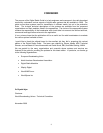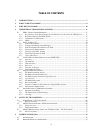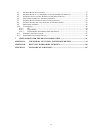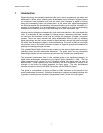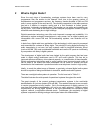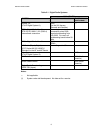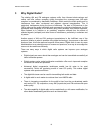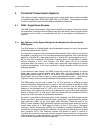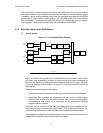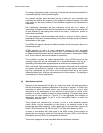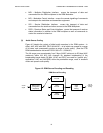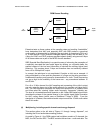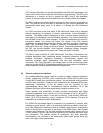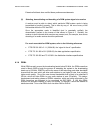DIGITAL RADIO GUIDE TERRESTRIAL TRANSMISSION SYSTEMS - DRM
11
4 Terrestrial Transmission Systems
This section provides a technical overview of the various digital radio systems available
for terrestrial application: DRM, DAB, ISDB-TSB, and HD Radio. These systems operate
in various frequency bands and offer different attributes and features.
4.1 DRM – Digital Radio Mondiale
The DRM system encompasses a high level of flexibility in its design. These are noted in
this subsection in the signal flow sequence going from the delivery from a program studio
or network control centre to a transmission site and on to reception and decoding in a
receiver.
4.1.1 Key Features of the System Design for the Markets to be Served by the
DRM System
The DRM system is a flexible digital sound broadcasting system for use in the terrestrial
broadcasting bands below 30 MHz.
It is important to recognize that the consumer radio receiver of the near future will need to
be capable of decoding any or all of several terrestrial transmissions; that is narrow-band
digital (for <30 MHz RF), wider band digital (for >30 MHz RF), and analogue for the LF,
MF, HF and VHF (including the FM) bands. In addition there is the possibility of satellite
delivery reception in the L- and S-bands. The DRM system will be an important
component within the receiver. It is unlikely that a consumer radio designed to receive
terrestrial transmissions in the near future with a digital capability would exclude the
analogue capability.
In the consumer radio receiver, the DRM system will provide the capability to receive
digital radio (sound, program related data, other data, and still pictures) in all the
broadcasting bands below 30 MHz. It can function in an independent manner, but, as
stated above, will more likely be part of a more comprehensive receiver – much like the
majority of today’s receivers that include AM and FM analogue reception capability.
The DRM system can be used in either 9 or 10 kHz channels, or multiples of these
channel bandwidths. Differences on how much of the total available bit stream for these
channels is used for audio, for error protection and correction, and for data transfer
depend on the allocated band (LF, MF or HF) and on the intended use (for example,
ground wave, short distance sky wave or long distance sky wave, with a data application
service or without one). In other words, there are modal trade-offs available so that the
system can match the needs of broadcasters worldwide.
As noted in more detail in subsequent parts of this subsection, the DRM system has the
following structure. It employs advanced audio coding (AAC), supplemented by spectral
band replication (SBR), as the main digital audio encoding. These are parts of the
MPEG-4 audio standard. SBR significantly improves perceived audio quality so that the
overall audio quality of a DRM signal is similar to that of FM (mono). Orthogonal
Frequency Division Multiplexing (OFDM) and Quadrature Amplitude Modulation (QAM)
are used for the channel coding and modulation, along with time interleaving and forward
error correction (FEC). Pilot reference symbols are injected to permit a receiver to
“equalize” the channel by comparing a known stored bit sequence with the corresponding
received sequence of these special bits, and adjusting accordingly if there are differences
in the received compared to the stored sequence.



